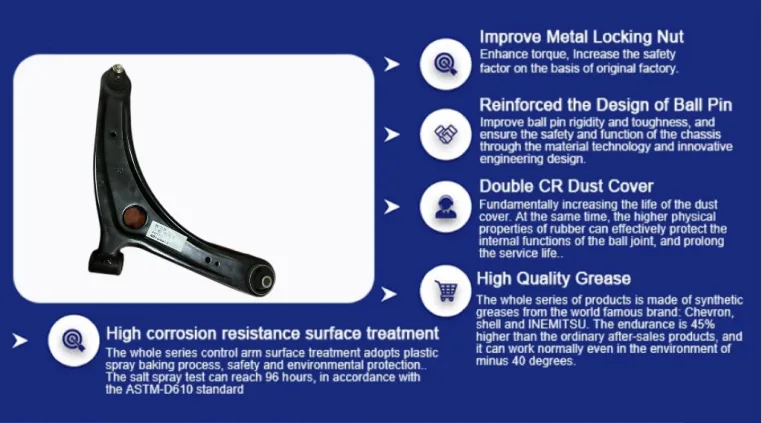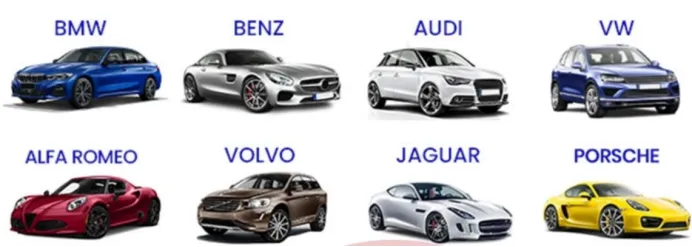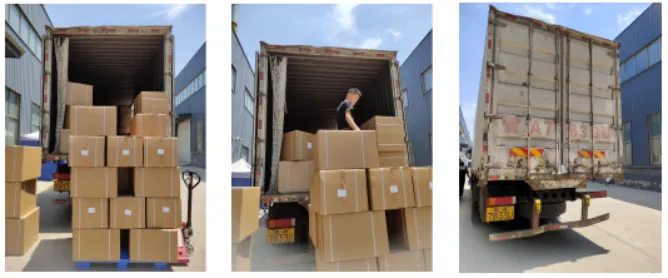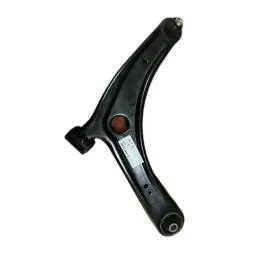The Mitsubishi car control arm plays a crucial role in the suspension system of the vehicle. It is responsible for connecting the steering knuckle to the vehicle's frame, allowing for the smooth movement of the wheels and absorbing shocks from the road surface. The control arm is a vital component that ensures proper handling, stability, and control of the vehicle.
The control arm is typically made up of a metal framework that is designed to withstand the forces and stresses experienced during normal driving conditions. It is often composed of high-strength steel or aluminum alloy to provide the necessary strength and durability. The control arm also includes various bushings, ball joints, and mounting points to allow for flexibility and movement while maintaining structural integrity.
The manufacturing process of a Mitsubishi car control arm involves precision engineering and high-quality materials. The control arm is designed using computer-aided design (CAD) software to ensure accurate dimensions and specifications. The metal framework is then forged, cast, or machined to shape, followed by heat treatment to enhance strength and durability. The control arm is then assembled with bushings, ball joints, and other components before undergoing rigorous testing for quality assurance.
Once installed in a Mitsubishi vehicle, the control arm serves to control the motion of the wheels and ensure proper alignment. It helps to maintain the wheel's position relative to the vehicle's frame, allowing for smooth steering and handling. The control arm also plays a critical role in absorbing shocks and vibrations from the road surface, providing a comfortable and stable ride for the driver and passengers.
In conclusion, the Mitsubishi car control arm is an essential component of the vehicle's suspension system. It is designed to provide stability, control, and comfort while driving. With its sturdy construction, precise engineering, and high-quality materials, the control arm ensures reliable performance and safety for Mitsubishi vehicles on the road.
|
Mea kūʻai |
ʻO ke alo o lalo o ka lima hoʻomalu a me ka hui pōpē kūpono no Lancer Outlander 4013A009 4013A010 |
|
Helu OEM |
4013A009 4013A010 |
|
Mea waiwai |
Mahele Hoolei |
|
kala kala |
ʻEleʻele/Maʻamau |
|
Wahi kumu |
ʻĀina nui o Kina |
|
lawelawe |
OEM & ODM |
|
MOQ |
100 PCS |
|
Hiki ke hoolako |
100000/Mahina |
|
Manawa Uku |
T/T, L/C |
|
Manawa Hoʻouna |
25-35 mau lā ma hope o ka hōʻoia ʻana o ke kauoha |
|
Kau Kalepa |
FOB, CIF, CFR, EXW etc |
|
Hoʻopili |
1.ʻeke ʻeke + Kāleka; |


Hāʻawi


- Q: He aha kāu mau ʻōlelo o ka hoʻopili ʻana?
- A: Loaʻa iā mākou nā ʻano ʻāpana he nui, ʻoiaʻiʻo e ʻae ʻia kāu hoʻolālā ponoʻī, hiki iā mākou ke hana i ka pōʻai no ʻoe
- Q: He aha kāu mau ʻōlelo uku?
- A: T / T 30% e like me ka waiho ʻana, a me 70% ma mua o ka lawe ʻana. E hōʻike mākou iā ʻoe i nā kiʻi o nā huahana a me nā pūʻolo ma mua o kou uku ʻana i ke koena.
- Q: Pehea e pili ana i kou manawa lawe?
- A: ʻO ka maʻamau he 5-10 mau lā inā loaʻa nā waiwai. a i ʻole he 15-20 mau lā inā ʻaʻole i loaʻa nā waiwai, e like me ka nui.
- Q: Hiki iā ʻoe ke hana e like me nā laʻana?
- A: ʻAe, hiki iā mākou ke hana e kāu mau laʻana a i ʻole nā kiʻi ʻenehana. Hiki iā mākou ke hana i nā ʻāpana a me nā mea hana.
- Q: Hāʻawi anei ʻoe i nā laʻana? He manuahi a keu paha?
- A: ʻAe, hiki iā mākou ke hāʻawi i ka hāpana no ka uku manuahi akā ʻaʻole e uku i ke kumukūʻai o ka ukana.
- Q: He aha ka MOQ no kēlā me kēia mea?
- A: Inā loaʻa iā mākou nā mea waiwai, ʻaʻohe palena no ka MOQ, a ʻo ka MOQ maʻamau he 100 mau ʻāpana.
- Q: Pehea ʻoe e hana ai i kā mākou ʻoihana lōʻihi a me ka pilina maikaʻi?
- A:We keep good quality and competitive price to ensure our customers benefit ; We respect every customer as our friend and we sincerely do business and make friends with them, no matter where they come from
















































































































